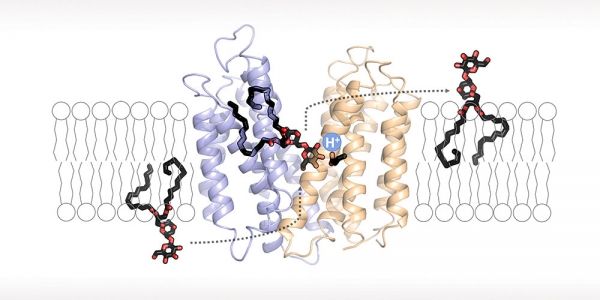Certain bacteria, including the dangerous nosocomial pathogen MRSA, can protect themselves from acidic conditions in our body and thus ensure their survival. Researchers at the Biozentrum of the University of Basel have now elucidated an important mechanism in this process. A transport protein involved in cell wall biosynthesis plays a key role, they report in the journal Nature Structural & Molecular Biology.
Each year, thousands of patients in Swiss hospitals become infected with dangerous pathogens that can hardly be controlled with antibiotics. The methicillin-resistant bacterium Staphylococcus aureus, MRSA for short, is particularly feared among the multi-resistant nosocomial germs. It can cause severe wound, respiratory and urinary tract infections and life-threatening sepsis. This is aggravated by the fact that MRSA causes chronic infections.
The cell wall as a therapeutic target
The bacterial cell wall is a key target in the search for new antimicrobials, as only an intact cell wall can protect the pathogens from the host’s immune defence and from antibiotics. In a recent study, scientists led by Prof. Camilo Perez from the University of Basel’s Biozentrum have elucidated the structure and function of a flippase transporter involved in the synthesis of lipoteichoic acids in the pathogen MRSA. Lipoteichoic acids are important biopolymers that provide stability to the cell wall of Gram-positive bacteria, facilitate colonization of the host and contribute to repelling antibiotics.
Read more at University Of Basel
Image: Flippase transporter involved in bacterial cell wall biogenesis. CREDIT: University of Basel, Biozentrum


